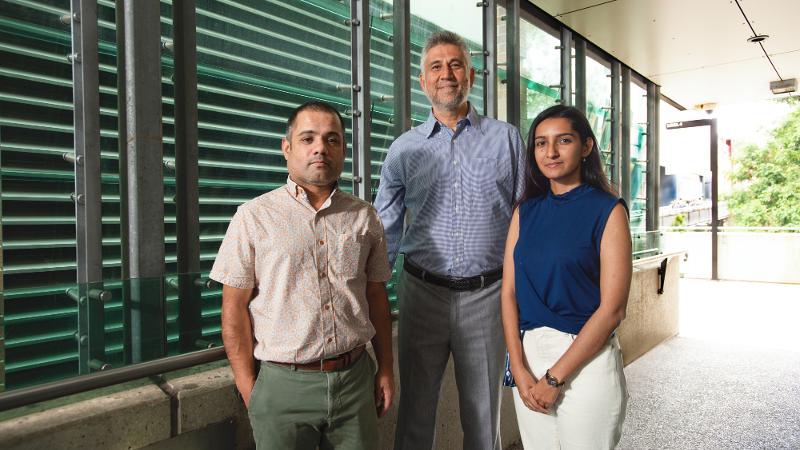
QUT researchers have homed in on AI-powered chatbots in the local government sector to look at their benefits and risks, what they are used for and why, and how users view them.
The study conducted by an international research team including QUT PhD student Sajani Senadheera, Professor Tan Yigitcanlar from the QUT School of Architecture and Built Environment and Professor Kevin Desouza from the QUT School of Management provides a comprehensive overview of the impact of chatbots in local government.
QUT PhD student Sajani Senadheera said the study highlighted that chatbots could significantly transform and improve citizen-government communication, which had long been problematic for local governments.
“Currently, chatbots in local governments serve purposes such as providing information, facilitating consultations, handling transactions, and addressing complaints, thereby create a greater opportunity to enhance outreach and engagement with its citizens,” Ms Senadheera said.
“The key benefits of using chatbots in local governments include reduced workload, delegation of often requested tasks, enabling human personnel to focus on more complicated duties, optimised daily routines, timesaving, and enhanced cost-efficiency in public expenditure.”
In the study the researchers referenced a real-world application - the Microsoft Azure chatbot called “CHIP” deployed by local government in Los Angeles that CEO of cFocus Software, Jasson Walker Jr said, “had shown remarkable results, with a 50 per cent reduction in received emails”.
“Despite the benefits of an exemplary chatbot like that one, concerns related to accuracy, accountability, exclusionary assumptions, and ethical considerations do pose challenges to the widespread adoption of AI-powered chatbots in local government settings,” Ms Senadheera said.
Ms Senadheera gave the example of a chatbot “Ask Jamie”, which was deployed by the Singapore Ministry of Health during the COVID-19 pandemic and discontinued after several complaints of inappropriate and offensive answers to residents’ inquiries.
“Incidents such as that underscores that a meticulous evaluation on government readiness is a critical factor for adoption success,” Ms Senadheera said.
“While the initial public trust in such emerging technologies as chatbots is unpredictable, their acceptance among users can be influenced by the perceived humanness of a chatbot.”

Professor Yigitcanlar said interactions and chatbot adoption by governments is a relatively understudied area of research and the study highlighted their potential to enhance communication, transform citizen-government interactions, and adapt to the changing expectations of users in a digital society.
“Chatbots are computer programs that can understand client inquiries and respond automatically, leveraged by a range of technologies - including Natural Language Processing (NLP), Machine Learning (ML), Dialog Management, Application Programming Interface (API), and Natural Language Generation (NLG),” Professor Yigitcanlar said.
“Once an inquiry is posted, NLP enables a chatbot to comprehend the sentence structure and user intent by breaking it down into individual phrases and words.
“Then, ML algorithms allow chatbots to learn without explicit programming to generate responses and the flow of discussion between the chatbot and the user is controlled by dialogue management.”
Professor Yigitcanlar said chatbots can communicate with other software programs and services via APIs while NLG allows chatbots to create plausible human-sounding responses.
“These technologies’ collaborative efforts enable chatbots to imitate human-like conversations, learn from prior interactions, and give customised support to the users,” he said.
Ms Senadheera said the incorporation of user suggestions and institutional implications in the design thinking process could improve the service quality of chatbots in local governments.
“As users’ expectations of capabilities evolve towards more personalised interactions and faster response times, the trend towards self-service and on-demand services will further advance the adoption of chatbots in local governments,” Ms Senadheera said.
Professor Yigitcanlar said the evolution of changing public behaviours and the shift towards a digital society will significantly welcome the chatbot adoption in future for local governments.
“Our study offers a novel chatbot adoption conceptual framework for local governments, and our prospective studies with local governments from Australia and overseas will involve real-world application of the consolidated framework,” Professor Yigitcanlar said.
Professor Yigitcanlar highlighted the evolution of research on local government chatbots, noting a shift from traditional chatbots known for their simplicity and reliability in providing planned answers to the emerging focus on ChatGPT for local government.
“This new generation of chatbots can engage in human-like conversations, understand natural language inputs, and is the focal point of our prospective studies.”
View paper: Understanding Chatbot Adoption in Local Governments: A Review and Framework
Main image: (from left) Professor Kevin Desouza, Professor Tan Yigitcanlar and QUT PhD student Sajani Senadheera.
Media contact:
Pat Whyte, QUT Media, 07 3138 1150, media@qut.edu.au
After hours: 0407 585 901


